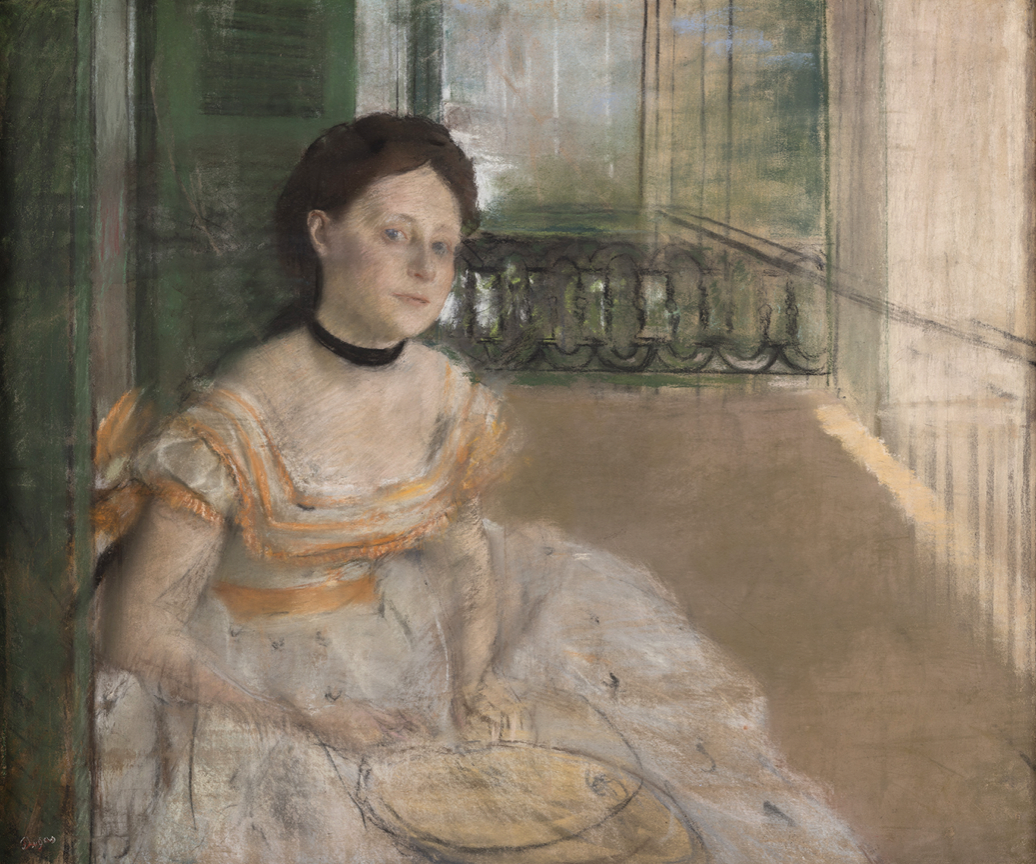By Gail Sibley
I sure do love it when I discover a pastel that shows an artist’s process! Recently I was mooching around The Met (online) and came across this piece by Edgar Degas of what is believed to be Mathilde Musson, a cousin of Degas’ living in New Orleans.
Here’s the full sheet of the pastel work.
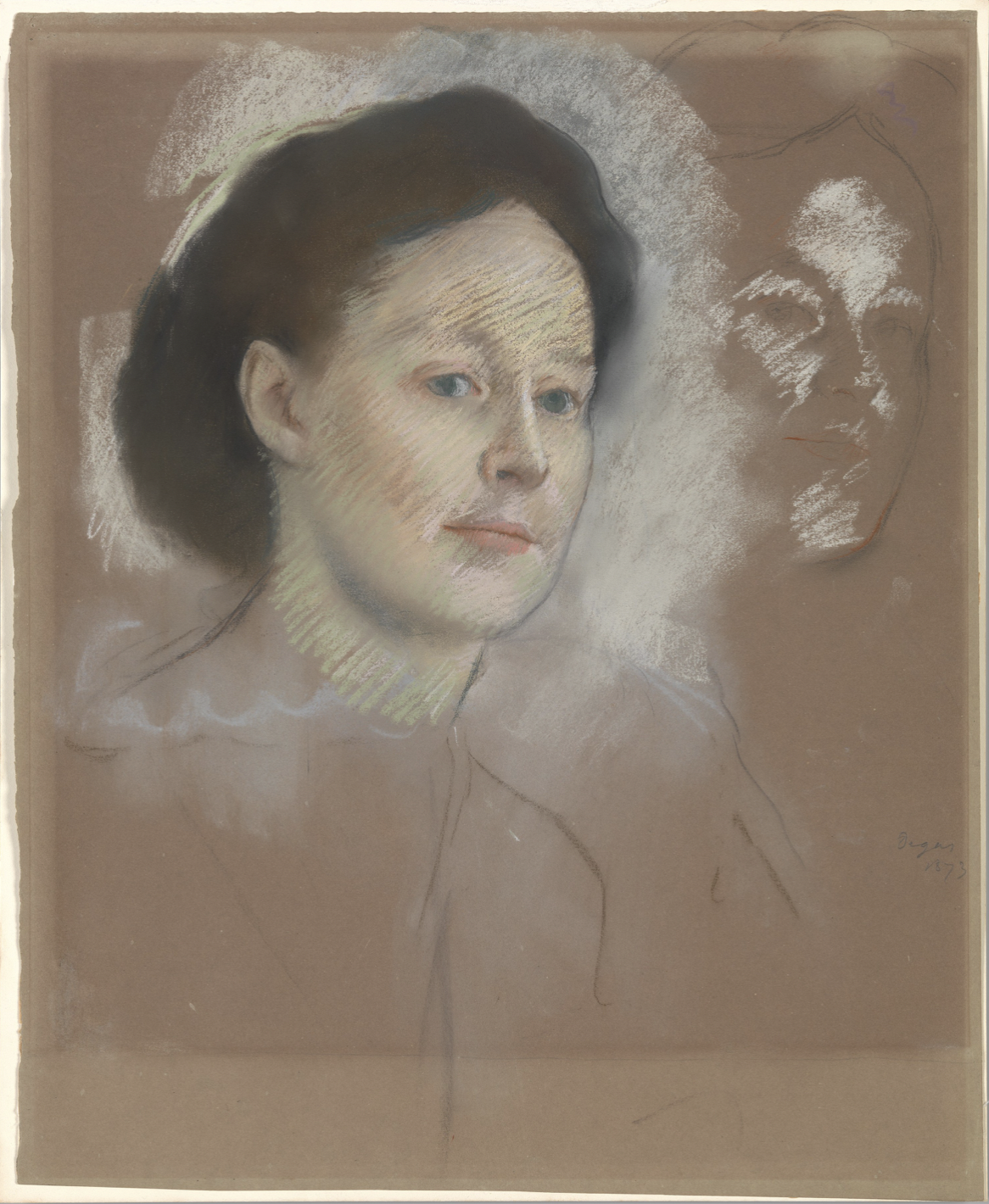
Something to note is that this was originally done on green paper. Over time, it’s changed (faded?) to the brown we now see. It’s important to realise that Degas chose green to use as the undercolour for this portrait of Mathilde Musson, not this visible warm brown.
Now let’s have a closer look at a few areas of the piece.
First, there’s that second drawing to the right. This is what caught my attention.
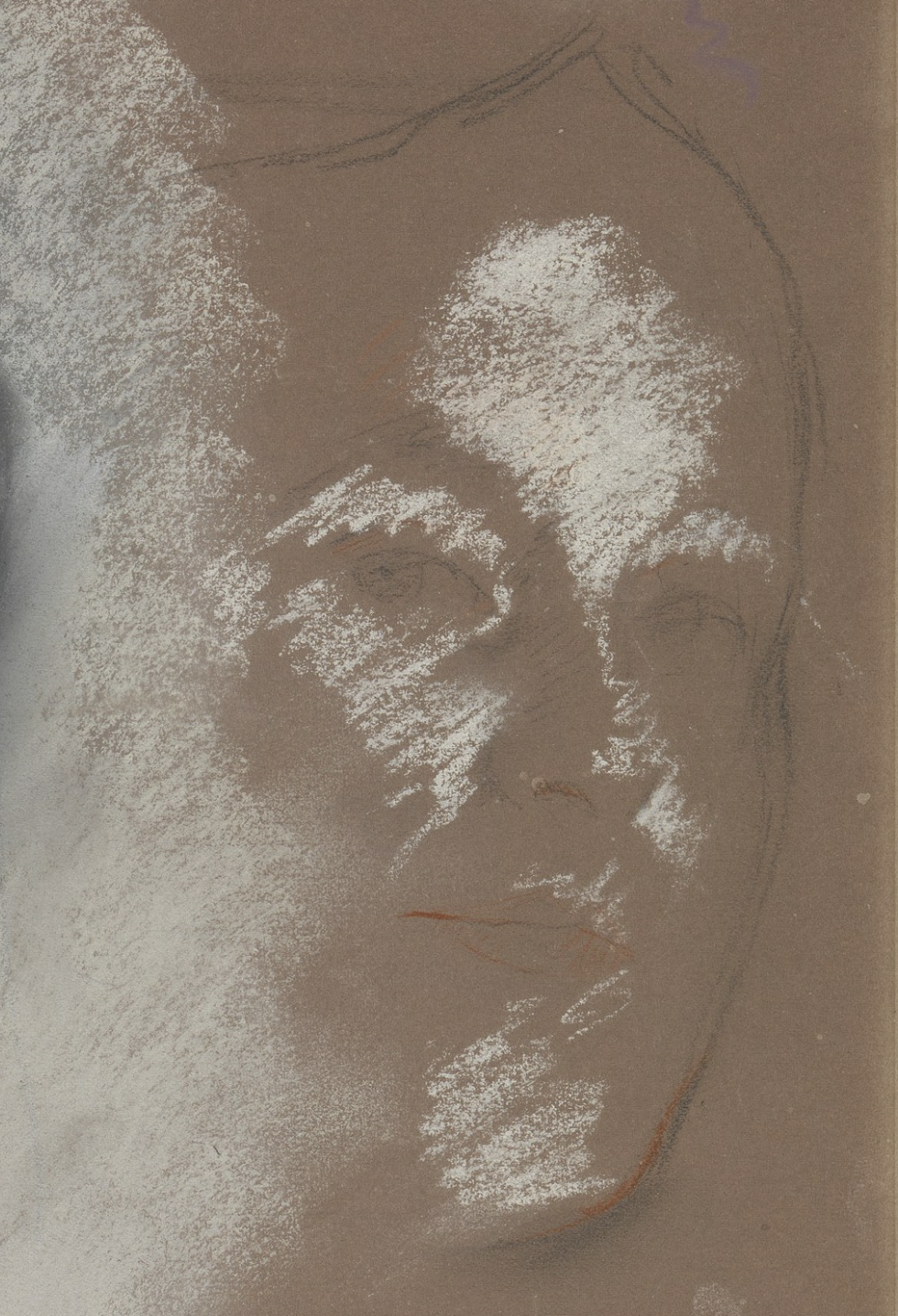
The unfinished face gives us clues as to how Degas may have started his work. He put down a few lines to indicate the contour of the face, the eyes, the nose, and the mouth. Then he added a white to indicate the lightest parts of the face. You can almost make out a similar working start in the more finished of the two faces. The question is, which came first? It would seem that this was a second exploration of the face structure as it’s near the edge of the paper. You can also make out a possible change in the way the position of the head relates to the body, but maybe that’s going too far. What do you think?
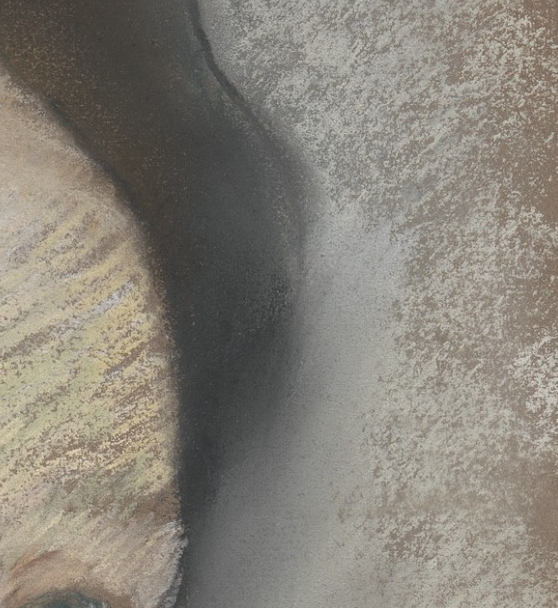
This blended area is interesting – it appears to reveal that Degas made a correction in where the outer edge of the hair ends.
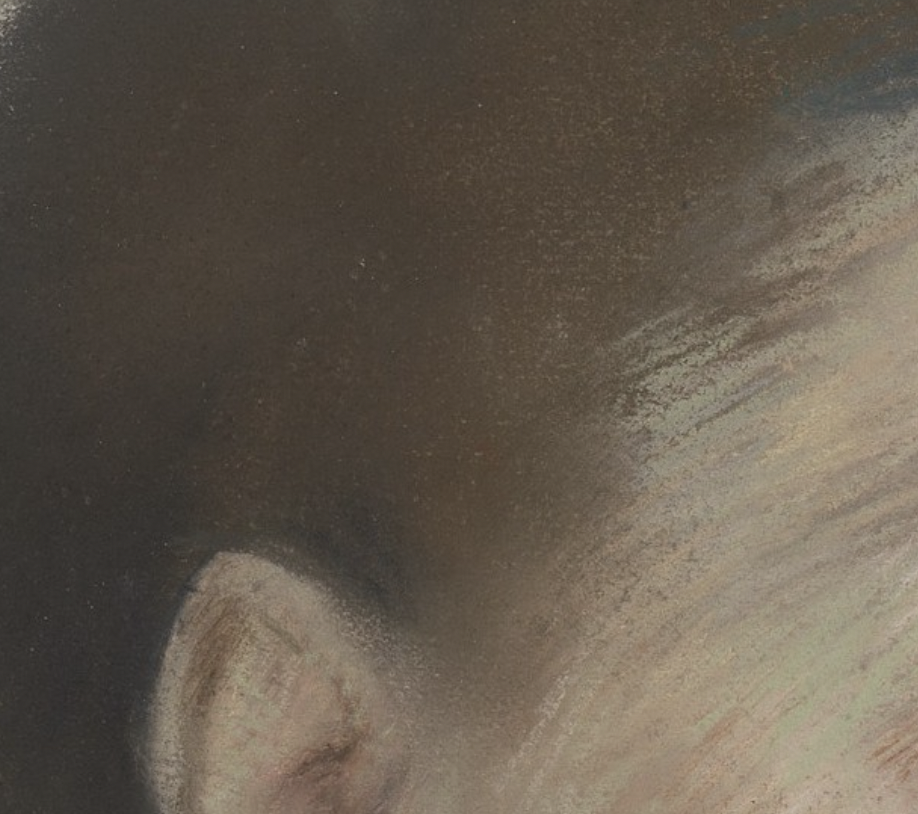
I love the way Degas indicates the hairline with an initial area of (mainly) one colour with linear marks then added to show where the skin tone overlaps. This is the opposite of what we may tend to do – we might lay down an area of skin and then apply linear marks to represent hair!
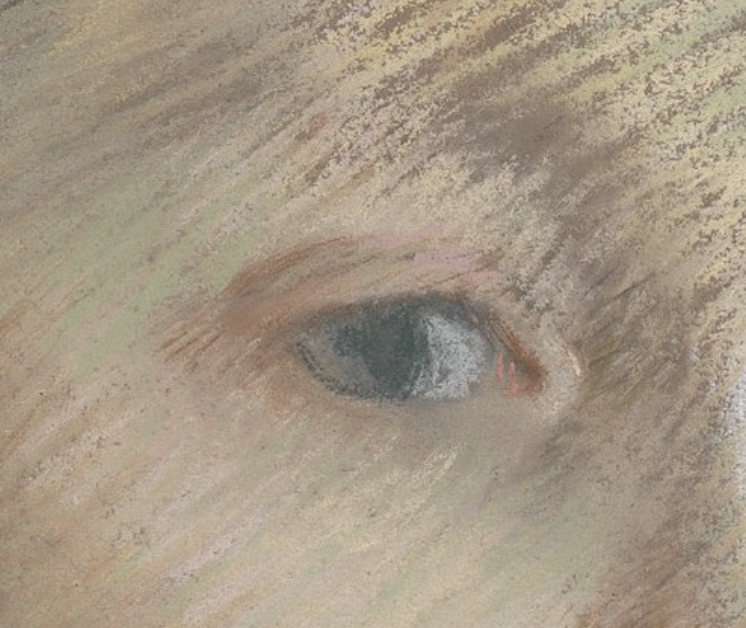
This closeup is here just because I’m always intrigued by the way an artist creates the illusion of eyes – the colours they use, the values they use, the drawing, all of it!
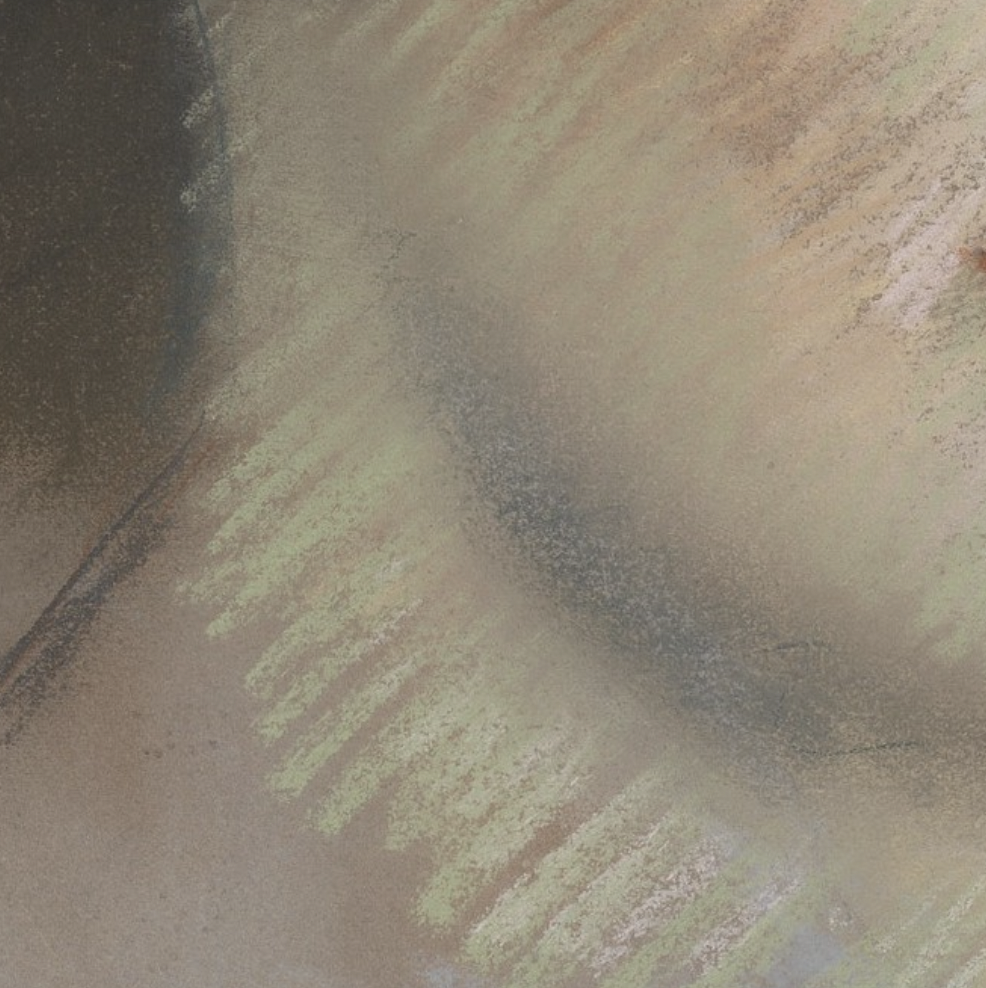
It’s so easy to overemphasise (in colour, value, and edge) the area below the jaw bone. Degas applied a thin layer of grey-blue pastel and a bit of warm brown. Lighter marks are hatched along the edges. Remember the paper showing through the blue pastel would have been green rather than brown (cool rather than warm).
Let’s have a look at the whole sheet again.

The notes from The Met’s website read:
The sitter for this likeness is thought to be Mathilde Musson, one of Degas’s cousins in New Orleans. Degas made a number of pictures featuring Mathilde and her two sisters when he visited the family during the fall and winter of 1872–73. The women can be difficult to tell apart, but the tilt of the head and the intelligent, sidelong gaze seen here closely resemble the figure of Mathilde in another, more finished pastel (Ordrupgaard, Copenhagen). Mathilde was then a new mother, and the artist complained, “to make a cousin sit for you who is feeding an imp of two months is quite hard work.”
I got curious about the pastel in Copenhagen so went to look for it. It’s not one I recall seeing. There’s a lot to talk about with this one too! It’s definitely not a finished piece. Another time….
